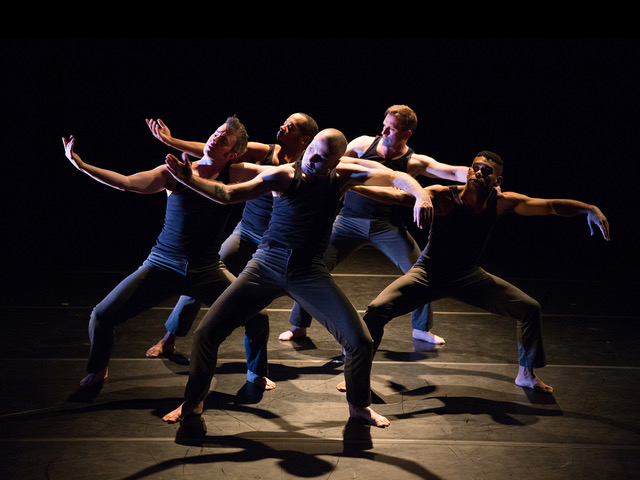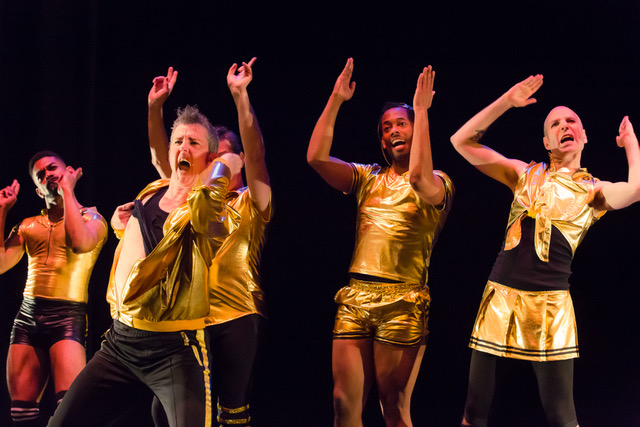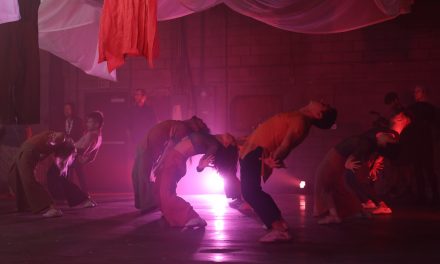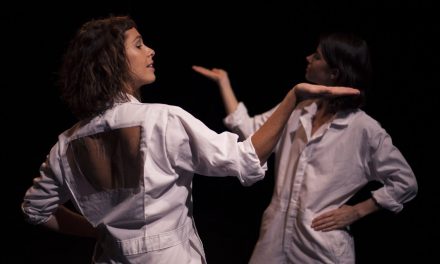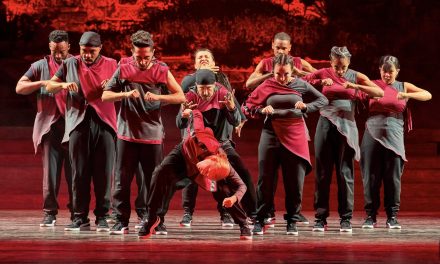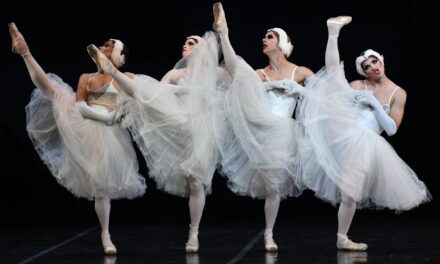Dance Magazine put choreographer Sean Dorsey on its 25 to Watch list and, after seeing his dance/theater work titled Boys In Trouble at Highways Performance Space, I will add my voice to that declaration. The 90-minute piece, including intermission, was filled with wisdom, confrontation of so-called norms and a brilliant look at how the LGBTQ community feels about masculinity, love, their rights, and their bodies. Boys In Trouble was part of BEHOLD!, a queer arts series, and a wonderful tribute to the great work that Highways has done over the past 30 years to provide support and a venue for artists of all races, cultural backgrounds, genders and artistic genres to have a safe environment to present their work. Boys In Trouble was the fourth work by Dorsey to be supported by Highways.
Based in San Francisco, Dorsey is an award-winning choreographer, dancer and writer who is seen as the U.S.’ first acclaimed transgender modern dance choreographer. He is the Artistic Director/Choreographer of Sean Dorsey Dance, and the founder and Artistic Director of Fresh Meat Productions, “the nation’s first organization to create, present and tour year-round multidisciplinary transgender arts programs”.
Three years in the making, Boys In Trouble was a work that you could not walk away from without feeling a host of emotions churning around inside your head, heart and gut. Dorsey not only held a mirror up to the so-called straight male population, but he lovingly challenged the self-hating weaknesses within the LGBTQ community as well. During one powerful section, Dorsey talked about his desire to be like the stage version of the musical Peter Pan; to fly freely over the crowd and for a few minutes, make people forget that he was held up by wires. Dorsey made it clear at the end of this section, and throughout the work, that he has learned to live freely within a world that most of which does not wish him anything but harm.
The five-member cast hit us with reality and then eased our aches with humor. It is, however, humor that exposes a long journey of fear, anguish and self-deprecation. Dorsey’s choreography is beautifully constructed, and the dancers perform it with great clarity and honesty.
What struck me most about Boys In Trouble was the rectitude, and how Dorsey and his cast spoke their truth in a way anyone willing to see or listen could understand. There were sections with gay camp, but they were short lived and always followed by either reality or a deep look into what exactly is meant by the term masculinity. What does it mean to be a man, or a butch gay man for that matter?
Dorsey used true transsexual confessions, a black gay man’s view of loving another black gay man (ArVéjon Jones and Will Woodward), and the words of an aging gay, ex-Broadway dancer (Brian Fisher) within his writings. The power in this work was that the dancing worked in concert with his writings and the spoken word; both live and recorded. Dorsey understands theater as well as how to make dances.
Dorsey’s strong opening solo, performed within a single pool of light, revealed to the audience his intentions for Boys In Trouble, while demonstrating his gifts as a performer. He quickly introduced his cast, and through his movement and narration, exposed their strengths and their vulnerabilities.
There are several sections that still linger in my head. One is a story of when Dorsey had not yet surgically altered his body to appear more masculine. He was alone on a bus headed home and spoke to how he finally had “The Luxury of Space” to be who he was without feeling the judging stares by others. Sadly, this freedom proved to be short lived, however, when two “straight” guys boarded the bus, followed him when he got off, and beat him up. The wisdom that Sean took from this horrible experience, and then shared with us through his writing and choreography was that men like his abusers need people like him and others, to allow them to feel like real men. Without victims to harass, they cannot and do not exist.
There was a beautiful and moving solo performed by Nol Simonse who, while we heard his voice describing a scene in his youth, changed into a burgundy, spaghetti strap dance dress and pink pointe shoes. Simonse went on to perform an introspective solo with such sensitivity and grace that it almost made me weep. His pointe work was excellent, as was his modern and contemporary ballet technique.
Dorsey pointed out what every “different” boy realizes early on in school, that boys and men can instantly sniff out those who are different. His choreography even incorporated the physical action of smelling out, and it does so in a manner that brought back memories of being a young gay boy trembling in terror during PE classes.
There was a touching duet for two men (Dorsey and Brian Fisher) who were attracted to one another, move from testing whether the other is also gay to freely expressing their affections. Another section that stood out involved the entire cast performing down on a floor slashed with strips of white light. Dorsey used leg and arm movements to express what he called a brotherhood of separation; men who formed alliances because of being outcasts of society. It’s poignancy was enhanced through its simplicity.
In Dorsey’s section titled “Let’s Talk About Whiteness!” he used humor and satire to expose statements and actions that Caucasians use to try and make others think that they are not racist or bigoted. He also demonstrated through stereotypical stances how men project their machismo or to hide their insecurities.
The only weak moments in this dance/theater piece was when the cast seemed to forget how close the audience was to them, and used facial expressions designed to be read from a proscenium stage. These exaggerated expressions often came across as over acting or emoting.
Boys In Trouble was raw with feelings of what it means to be gay, transgender or gender non-specific. What was also powerful about this work was how Dorsey expressed the pride one feels when we take control of self. Dorsey made a very potent statement at the end of the work. He explained how, no matter what one has heard, he was not born in the wrong body, but the correct one, and as a transgender person, he has learned to fly like Peter Pan without the use of wires.
Boys In Trouble was choreographed and written by Sean Dorsey with movement created and performed by the entire cast: Sean Dorsey, Brian Fisher, ArVéjon Jones, Nol Simonse, and Will Woodward. The strong and dramatic lighting was by Clyde Sheets, with wonderful costumes designed by Tiffany Amundson. The original music that greatly enhanced the entire evening was by Alex Kelly, Jesse Olsen Bay, Ben Kessler, Anomie Bell, and LD Brown/Grey Reverend. Additional text by ArVéjon Jones and Nol Simonse.
For information on Sean Dorsey Dance, click here.
For information on Fresh Meat Productions, click here.
Next in the BEHOLD! Series: KYOKO-JINJABREW presents ASIAN AMERICA: THE FUTURE IS NOW, Friday and Saturday, May 24 & 25 at 8:30 PM. For information and tickets, click here.
Featured image: Sean Dorsey Dance – Boys In Trouble – Photo by Lyndia Daniller

